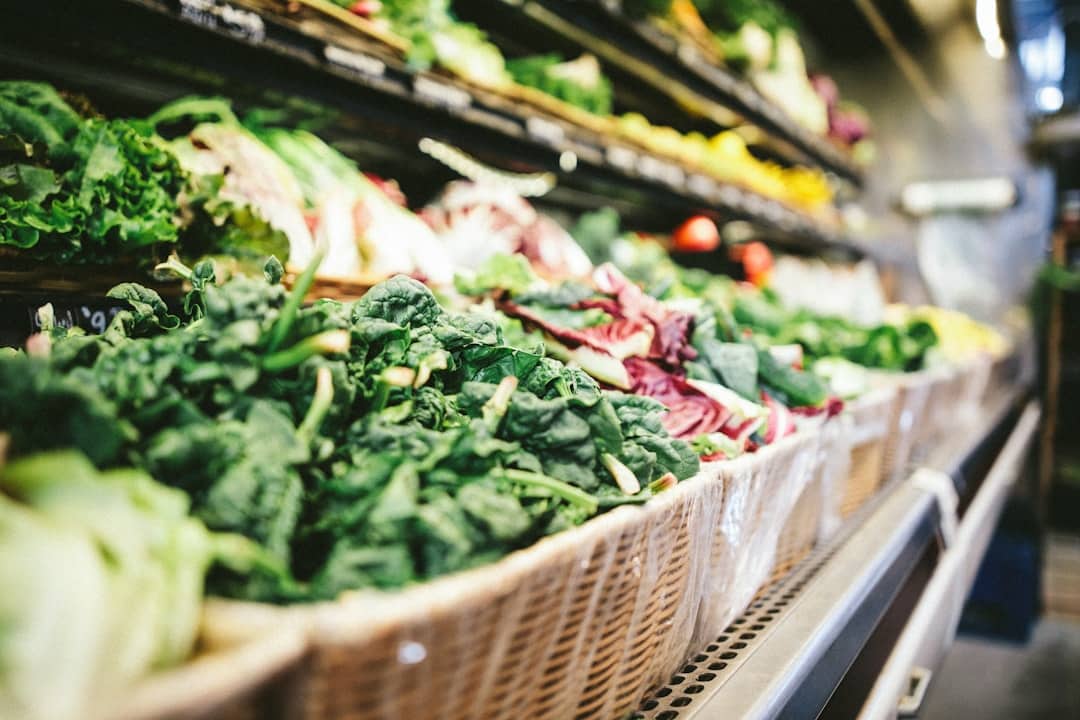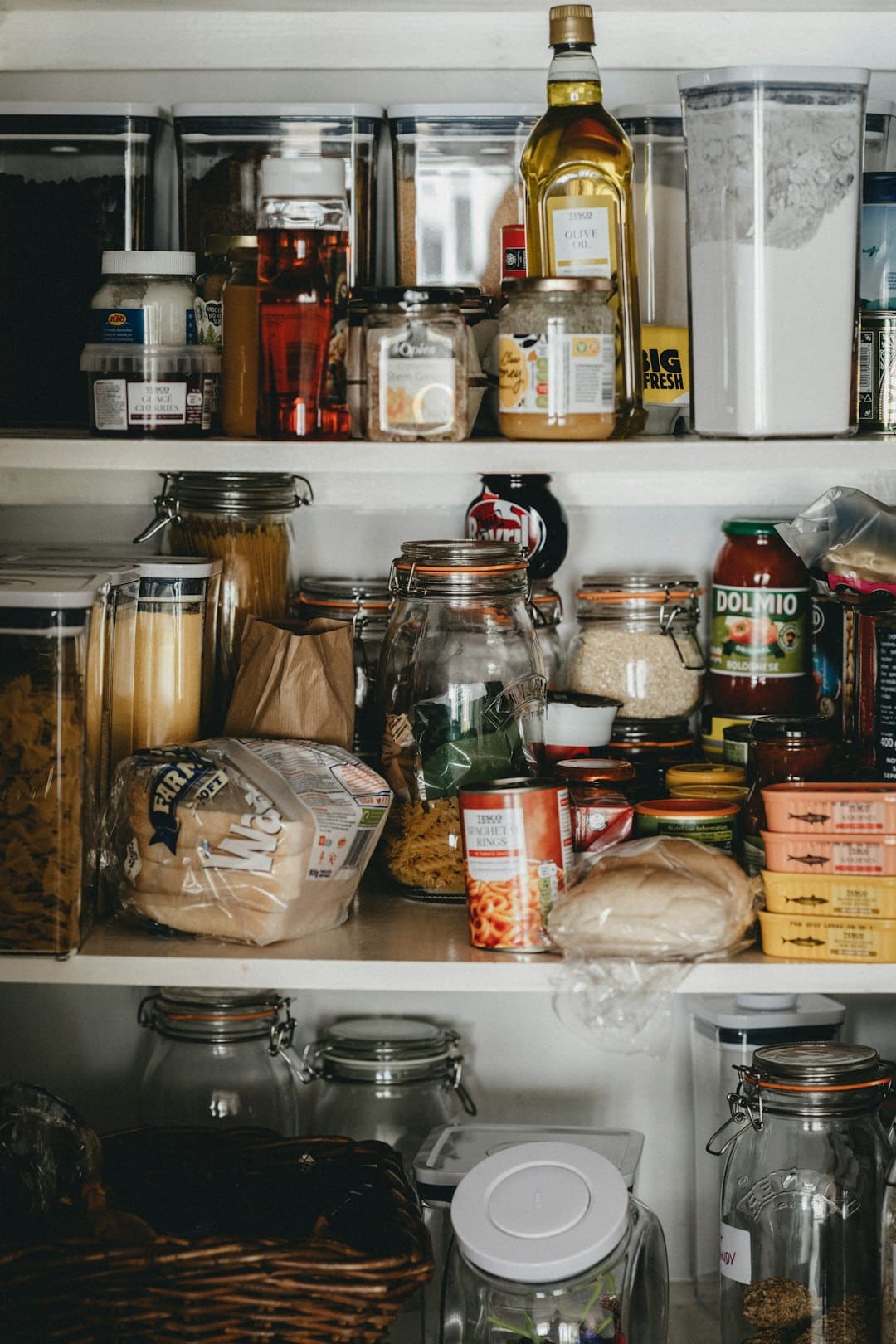Learn how to focus on your health without breaking the bank.

Like many of you, I’ve felt the pinch of rising food costs. It’s a challenging time for families. Cooking nutritious meals shouldn’t break the bank. I’ve learned a thing or two along the way that I’d love to share with you. One rule I live by is that I ALWAYS go grocery shopping with a shopping list. Planning is key! If it’s not on my list, it doesn’t go in the shopping cart. This simple strategy helps me avoid impulse buys and stick to healthy food choices. Eating healthy on a budget isn’t as difficult as it may seem! Allow me to show you how.
Best Tips for Eating Healthy On a Budget
Below, I’ll dive into the best ways to stretch your limited budget so you can enjoy a balanced diet without overspending. These top tips will help you lower your grocery bill while feeding your whole family well—because, let’s face it, even fast food is expensive now 😅.
By making a few adjustments, eating healthy on a budget is possible without stressing over the cost of food. Let’s get started!
1. Plan Your Meals Strategically

Meal planning is a great way to save money and eat a healthy diet without stress. Start by putting together a weekly menu with recipes that use some of the same ingredients.
For example, if one recipe calls for a can of black beans, plan another meal using black beans later in the week. It’s a simple trick to cut waste and keep your grocery list short and sweet. With a little meal prepping, you’ll enjoy affordable meals ready in no time.

Try making our High Protein Breakfast Burrito to enjoy in the morning and this yummy Farro and Black Bean Buddha Bowl for lunch or dinner. Bot use black beans, both are delicious!
Need some meal-planning inspo? Check out our meal plans! Whether you’re all about high protein or sticking to a budget, we’ve got plenty of options to match your diet and preferences.
2. Buy Staples in Bulk
Buying whole grains, beans, and other non-perishable items in bulk is one of my favorite simple ways to get a lower price per serving. Stocking up on pantry staples ensures you always have affordable basics when making your own meals.
Just compare unit prices to confirm you’re getting the lowest price possible. Proper storage keeps them fresh, so nothing goes to waste!
3. Choose Seasonal and Local Produce

Seasonal produce is nature’s way of offering fresh fruits and veggies at their peak flavor… and at the lowest cost! Shopping at your local farmers market often means better quality produce at lower prices than supermarket prices, but that isn’t always the case.
Many farmers markets even offer CSA programs, letting you buy directly from growers at a discount. For the best deals, check out our Seasonal Produce Guide by Region to plan your meals around what’s freshest!
4. Opt for Frozen Fruits and Veggies
If you’re anything like me and can’t seem to keep fresh produce from going bad, frozen fruits and veggies are a total lifesaver! It’s such a good way to eat healthy while sticking to your budget. Plus, they’re just as nutritious as fresh but with a longer shelf life.
I always keep my freezer stocked with frozen veggies for quick additions to soups, stir-fries, and pasta dishes. Frozen fruit is great for things like yogurt parfaits, smoothies, and homemade popsicles. And… bonus! It doesn’t matter whether they’re in season or not, so you can enjoy your favorite fruits all year round.
5. Try Alternative Protein Sources

Alternative proteins like beans, lentils, and tofu offer budget-friendly nutrition compared to pricier lean meats. These plant-based options stretch your grocery dollars while delivering plenty of protein and fiber.
Try incorporating them into weekly meals through simple swaps, like using lentils in tacos instead of ground beef. “Meatless Mondays” are a great way to experiment with new plant-based proteins and add variety to your diet.
For more affordable protein ideas, check out our article on 9 Plant-Based Proteins to try!
6. Hunt for Sales and Coupons
Smart shoppers know that timing purchases to store sales and choosing store brands can mean getting quality food at a good price. I plan my weekly meals around what’s on sale and check flyers before making my grocery list.
Digital coupons and loyalty programs add extra savings with minimal effort. Most grocery stores have apps for that now, so be sure to check if yours does!
7. Maintain a Pantry Inventory

A well-organized pantry starts with a quick check of what you already have before heading to the store. It’s such an easy way to avoid buying duplicates and wasting food. Personally, I keep a running list of my pantry items so I can plan meals around them.
Spending just five minutes each week tidying up the shelves allows me to quickly spot items nearing their expiration date. This simple habit not only streamlines my grocery trips but also helps me stay on budget!
8. Swap Ingredients Smartly
Guess what? Great meals don’t have to require expensive ingredients! With a few simple swaps, you can create delicious, nutritious meals without straining your budget. Try swapping pricey chicken breasts for protein-packed chickpeas or almond milk for water or dairy milk.
Even little changes, like swapping out store-bought sauces for homemade versions, can save you some serious cash. Plus, you’ll have more control over the ingredients and reduce your consumption of processed foods. Win-win!
9. Cook in Large Batches
Batch cooking transforms leftovers into smart, healthy choices. Cook once, and you’ve got meals ready for the whole week—it’s such a smart, stress-free way of eating healthy on a budget!
Make big batches of soups, grains, or proteins, and skip the higher cost of last-minute takeout. Just freeze individual portions for those days when cooking feels impossible. It’s an easy way to save time and money while still enjoying great food.
10. Tap into Community Resources

Stretching your food budget doesn’t have to be hard! Many local resources can help you save while still eating healthy on a budget. Check out food banks and pantries for quality staples, or join a community garden to grow your own produce on the cheap.
These programs make it easier for families to access healthy food without breaking the bank. Take a look at what’s available in your neighborhood—you might be surprised!
11. Learn Basic Nutrition Tips
Learning to decode food labels helps you spot healthier foods without overspending. Whole foods like beans, oats, and seasonal veggies often deliver the most nutrition per dollar.
Take a quick look at the nutrition facts to find options that fit your diet and budget. It doesn’t take much to create meals that are both healthy and affordable! I always look for fat, sodium, and sugar levels on labels to help me make better choices.
For more tips, check out our guide on 5 Things to Look Out For While Reading Nutrition Facts!
12. Share Meals with Loved Ones

No need to tackle meal planning and prepping all on your own! Sharing meals with friends or family makes eating healthy on a budget way more fun—and it’s easier on your wallet too. Everyone pitches in with ingredients, splitting the cost of good, nutritious food.
It’s a total win: you save money, cut down on waste, and turn dinner into quality time. Try fun ideas like themed potlucks or bulk-cooking sessions to keep it affordable and exciting. Need some recipe ideas? Check out our 20 Naughty Dinner Ideas the Whole Family Will Love!
13. Save on Pet Food Costs
Dog food prices can really add up! As a pet owner, you want to provide your furry friend with the best nutrition possible, but sometimes, that can come at a high cost. That’s why learning how to make homemade dog food is not only beneficial for your dog’s health but also your wallet.
One of the main reasons I started making my own dog food was that I noticed how expensive quality store-bought options were becoming. By prepping homemade dog food in advance, you control costs, avoid waste, and tailor meals to your dog’s needs.
Try our budget-friendly Homemade Beef Dog Food, complete with a meal planning guide!
14. Repurpose Leftovers Creatively

Leftovers are like a secret kitchen hack, turning last night’s meal into today’s easy lunch or a whole new dish with minimal effort. They save time and money and reduce waste while often tasting even better as flavors deepen overnight.
With a little creativity, that extra pasta becomes a frittata, or roasted veggies transform into a hearty grain bowl. You don’t have to spend extra on takeout or groceries when you have tasty leftovers waiting in the fridge. Get inspired with 17 Meals to Make with Leftovers and make every bite count!
Small Shifts for Big Savings

So, there you have it. Eating healthy on a budget isn’t just possible—it’s totally doable with a few smart moves! Plan your meals, shop seasonally, and don’t sleep on the digital coupons. A little prep goes a long way in cutting costs while keeping meals nutritious (and tasty!).
At the end of the day, it’s all about working smarter, not harder. Got your own money-saving hacks? Drop them in the comments—let’s keep this conversation going!
Budget-Friendly Recipes

Instant Pot Everything Chicken: This one is great for adding protein to many different meals all week long. From wraps to salads, and everything in between, this versatile chicken is a must try budget friendly meal. We also have a slow cooker version!
Amazing Black Bean Quesadillas: Black beans and cheese are the perfect budget friendly ingredients. Not to mention, this recipe will save you time as well as money!
6-Ingredient Orange Chicken: We wanted to include an inexpensive (and frankly, healthier) takeout alternative! This easy orange chicken is a great way to feed the whole family on a budget, and you may even end up with some delicious leftovers! Free lunch? Yes, please!
Walking Taco Casserole: Casseroles are a great option when you’re trying to stick to a budget. We almost always have things like seasoning, cheeses, canned goods, etc. in the pantry, so we usually only have to purchase the fresh ingredients like protein and veggies. Plus, casseroles tend to provide more than one meal, saving you money and time.
Easy No-Bake Workout Bars: Protein bars are outrageously expensive these days, but a great way to get your protein and energy in quickly. We highly recommend making your own instead of buying packaged bars at the store. In addition to being less expensive, they’re also healthier as they contain no mystery ingredients!
We’ve got plenty more recipes for you to check out, many of which will be gentle on your wallet.
Before you go, be sure to follow us on Facebook and Pinterest so you don’t miss out on our latest and greatest content.




